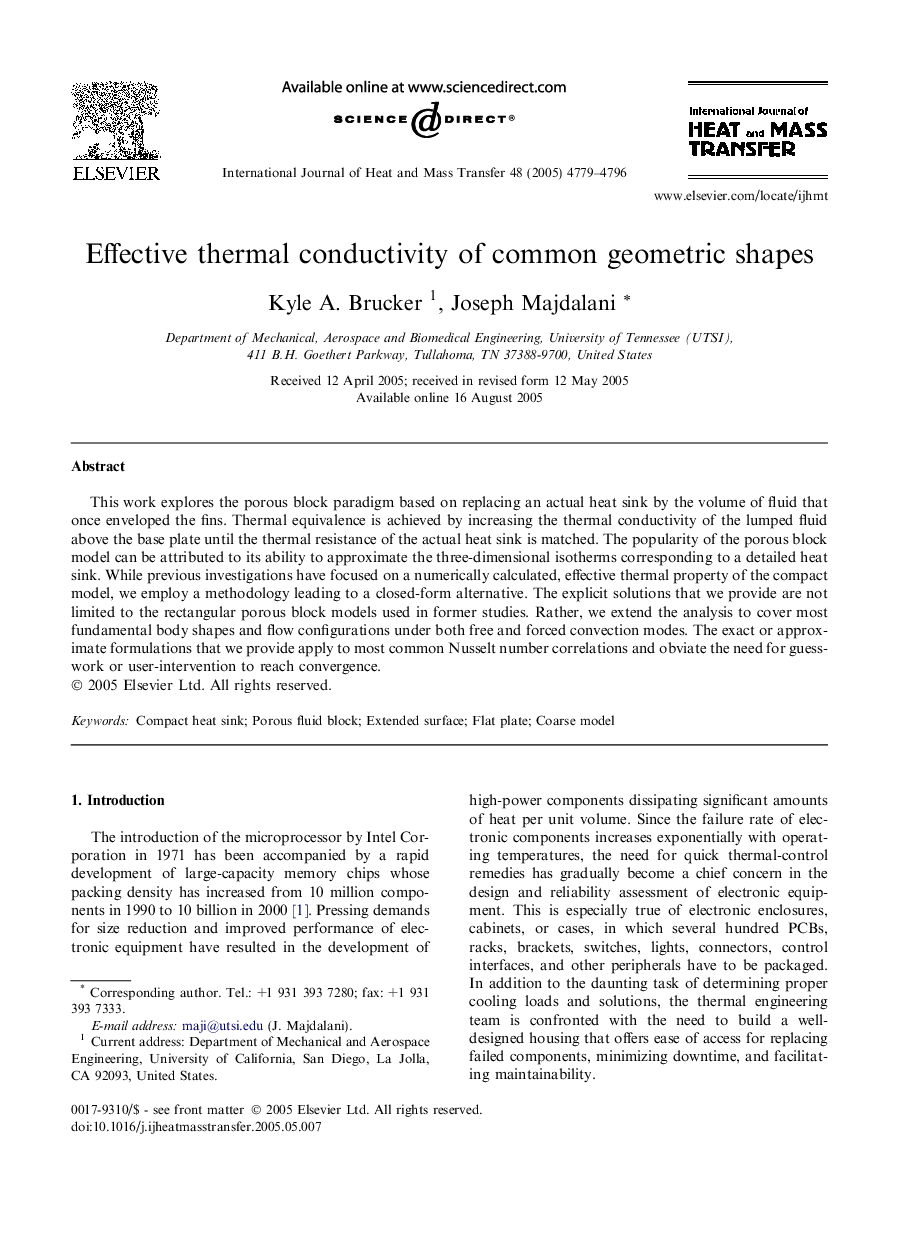| Article ID | Journal | Published Year | Pages | File Type |
|---|---|---|---|---|
| 662143 | International Journal of Heat and Mass Transfer | 2005 | 18 Pages |
Abstract
This work explores the porous block paradigm based on replacing an actual heat sink by the volume of fluid that once enveloped the fins. Thermal equivalence is achieved by increasing the thermal conductivity of the lumped fluid above the base plate until the thermal resistance of the actual heat sink is matched. The popularity of the porous block model can be attributed to its ability to approximate the three-dimensional isotherms corresponding to a detailed heat sink. While previous investigations have focused on a numerically calculated, effective thermal property of the compact model, we employ a methodology leading to a closed-form alternative. The explicit solutions that we provide are not limited to the rectangular porous block models used in former studies. Rather, we extend the analysis to cover most fundamental body shapes and flow configurations under both free and forced convection modes. The exact or approximate formulations that we provide apply to most common Nusselt number correlations and obviate the need for guesswork or user-intervention to reach convergence.
Keywords
Related Topics
Physical Sciences and Engineering
Chemical Engineering
Fluid Flow and Transfer Processes
Authors
Kyle A. Brucker, Joseph Majdalani,
